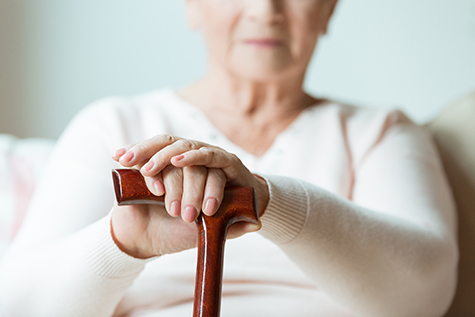One In Three Women At Risk of Osteoporosis

Bone health is important for overall health and quality of life and according to a rheumatology specialist at Hamad Medical Corporation (HMC).
Knowing the bone health status, especially for those aged 50 years and above, is a key way of identifying one’s risk of developing osteoporosis.
Dr Samar Al Emadi, Head of HMC’s Rheumatology Division, said anyone who has osteoporosis risk factors should talk to their doctor and seek a bone health assessment. She also recommends increasing their level of physical activity.
“Individuals at risk of osteoporosis should aim to exercise for 30 to 40 minutes three to four times each week, doing both weight-bearing and resistance exercises. Eating a nutritious, balanced diet which includes enough dietary calcium can also help prevent, or slow down the effects of, osteoporosis. Spending more time outdoors and getting enough vitamin D, or taking supplements if required, is also recommended. For those who smoke, we strongly advise them to quit. Quitting smoking has been shown to reduce the risk of low bone mass and fractures,” said Dr Al Emadi.
Dr Nabeel Abdulla, Consultant in Rheumatology said that several factors can increase the likelihood that an individual will develop osteoporosis, including age, race, lifestyle choices, and medical conditions and treatments.
“Osteoporosis (or thinning of the bones) weakens the bones and can lead to painful fractures or severe disability. Major risk factors for osteoporosis include aging, being female, low body weight, low gender hormones or menopause, smoking, a family history of osteoporosis, and some medications,” he said.
According Dr Abdulla, who is also HMC’s World Osteoporosis Day Organizing Committee Chairman, one in three women and one in five men over the age of 50 might be affected by osteoporosis during their lifetime. He adds that osteoporosis can lead to fractures that can be followed by chronic pain, depression, and even reduced life expectancy.
Each year, HMC’s Rheumatology Department receives around 70 to 80 patients with hip fractures, which are considered to be the most serious type of osteoporosis-related fracture. These patients require surgical intervention, followed by long-term treatment with osteoporosis medications to prevent future disabling fractures.
Dr Abdulla said that despite their devastating effect, osteoporotic fractures can be prevented if the bone disease is detected early.
